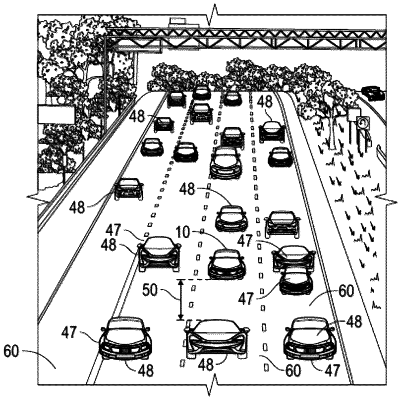| CPC G08G 1/0145 (2013.01) [G08G 1/0133 (2013.01); G08G 1/0141 (2013.01)] | 16 Claims |

|
1. A method for validating an autonomous vehicle performance using nearby traffic patterns, comprising:
receiving remote vehicle data, wherein the remote vehicle data includes at least one remote-vehicle motion parameter about a movement of each of a plurality of remote vehicles during a predetermined time interval, and each of the plurality of remote vehicles is located at a predetermined distance from a host vehicle;
determining a traffic pattern of the plurality of remote vehicles using the at least one remote-vehicle motion parameter of each of the plurality of remote vehicles during the predetermined time interval;
determining a similarity between the traffic pattern of the plurality of remote vehicles and movements of the host vehicle;
determining whether the similarity between the traffic pattern of the plurality of remote vehicles and the movements of the host vehicle is less than a predetermined threshold;
in response to determining that the similarity between the traffic pattern of the plurality of remote vehicles and the movements of the host vehicle is less than the predetermined threshold, commanding the host vehicle to adjust the movements thereof to match the traffic pattern of the plurality of remote vehicles;
wherein the similarity between the traffic pattern of the plurality of remote vehicles and the movements of the host vehicle is how close a value of a remote-vehicle motion parameter is to a value of a host-vehicle motion parameter of a same parameter class;
wherein the same parameter class includes an angular velocity profile during the predetermined time interval.
|